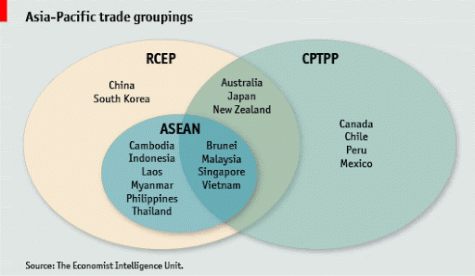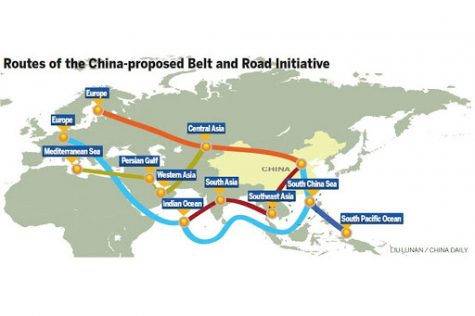Potentially the largest free trade agreement in history, the Regional Comprehensive Economic Partnership (RCEP) was signed earlier this month by 15 countries, and the United States was not one of them. India and the United States were respectively going to be members of the deal, but backed out under the Modi and Trump administrations.

The RCEP deal, signed Nov. 15, will help with East Asian integration around China and Japan. Members of the RCEP are Australia, Brunei, Japan, Malaysia, New Zealand, Singapore, Vietnam, China, Cambodia, Indonesia, Laos, Myanmar, the Philippines, South Korea, and Thailand.
The significance of this deal is that it will connect 30% of the world’s population. This new agreement will strengthen the economies of north and southeast Asia. The RCEP could also improve access to The Chinese Belt and Road Initiative funds. The Chinese Belt and Road Initiative is what some might call the new Silk Road. It was launched by President Xi Jinping of China in 2013 and it is a collection of development and investment initiatives that would stretch from East Asia and Europe to expand China’s economic and political influence in the world.

Russell Triplett is an associate professor in economics at the Coggin College of Business at the University of North Florida. He has areas of expertise in International Economics, Applied Econometrics, and Political Economy.
So, what exactly does the RCEP trade deal mean to the United States, and does it matter to us?
“The RCEP deal represents a consolidation of many of the preexisting trading relationships among the Association of Southeast Asian Nations (ASEAN) member countries, plus an extension and formalization of ASEAN’s relationships with larger Asian economies,” Triplett said.
Triplett suggests that by contrast, the Comprehensive and Progressive Agreement for Trans-Pacific Partnership (CPTPP) is a rather more ambitious trade agreement, both in terms of the scope of issues and depth of integration. It concluded in 2018, and is also a multilateral free trade agreement dominated by East Asian members.
“Originally the US played an important role in this initiative, but has since withdrawn. In my opinion, this is a missed opportunity for US leadership in the region,” Triplett said.
Professor Triplett says there is no doubt many of the RCEP members will continue to work with the US in other ways, including as strategic partners, so this deal should not be a significant cause for alarm. The fact that China, Korea and Japan overcame long-standing political differences, and found common ground on economic issues, is very welcoming.
“Good news for China is not by default bad news for the U.S. Economic growth and prosperity in other parts of the world is a good thing, period. RCEP will likely strengthen the east and southeast Asian value chains. To the extent that U.S. businesses are embedded within these value chains, they will likely benefit, especially if selling into the growing Chinese consumer market,” according to Triplett.
China makes up more than half of the RCEP’s gross domestic product. This is the first free trade agreement between China, Japan and South Korea, the second, third, and tenth largest economies in the world. Could this be game-changing when we think of the United States’ future influence in the world?
“Rhetoric will not be enough. If the US wishes to resume a leadership role within the global economy, it will have to lead by example. This will be challenging especially because of the urgency of more domestic priorities,” Triplett said.
__
For more information or news tips, or if you see an error in this story or have any compliments or concerns, contact editor@unfspinnaker.com.
















